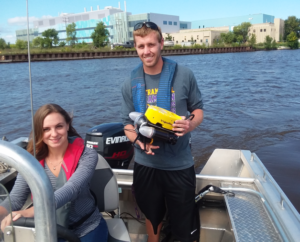Round Goby Discovery in Winnebago Update; Assessment Ramps Up
Fish Caught Off of Bowen St. Fishing Pier in Oshkosh In June, an angler caught a round goby in Lake Winnebago at the Bowen Street Fishing Pier in Oshkosh, the first known detection there. The invasive fish is about 3 to 6 inches long with bulging frog-like eyes and a fused fin on their [...]
The post Round Goby Discovery in Winnebago Update; Assessment Ramps Up appeared first on Fox-Wolf Watershed Alliance.
Fox-Wolf Watershed Alliance
https://fwwa.org/2025/09/26/round-goby-discovery-in-winnebago-update-assessment-ramps-up/?utm_source=rss&utm_medium=rss&utm_campaign=round-goby-discovery-in-winnebago-update-assessment-ramps-up

 Winnebago. Since then, the
Winnebago. Since then, the 


